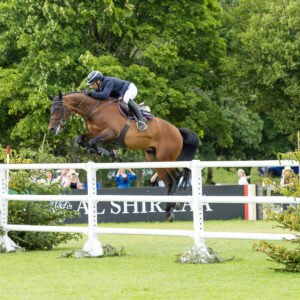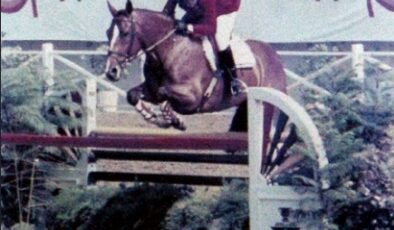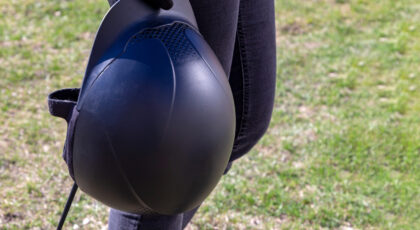When should your horse use a water treadmill or swimming pool?
Water treadmills and swimming pools are growing in popularity as tools to complement training and rehabilitation. But in what situations should they be used? In this week’s episode of the Sport Horse Podcast, Dr. Perse McCrae discusses her research examining precisely that.
Dr. McCrae’s PhD studies at the University of Calgary helped to define the role of water treadmills for rehabilitation and conditioning. In her research, she demonstrated that using water treadmills to condition horses resulted in improved peak oxygen capacities during track testing. Dr. McCrae also showed that increasing water depth had a greater impact on exercise intensity than increasing the speed of the treadmill.
She had the opportunity to study swimming in horses at Al Shaqab in Qatar, where the kinematics of the fore and hindlimbs were analyzed. These studies revealed that during swimming, elbow, tarsus, and stifle range of motion are increased compared to passive mobilization overground.
While both water treadmills and swimming pools utilize water to alter the horse’s movement mechanics, the outputs are quite different. Typically, work on a water treadmill is lower intensity and for a longer duration (up to ~ 20 minutes). Conversely, swimming is a relatively high intensity activity, with heart rates reaching up to 200 beats per minute (bpm) and swimming sessions typically lasting only a few minutes, though extremely fit horses may do longer swimming sessions (up to 20 minutes with rest between each swimming lap).
Thus, depending on the goals of the training session, you can obtain a very different workout for your horse (endurance vs speed-power workout) by choosing one modality over the other.
It is also important to consider the movements the horses perform in the two environments.
In water treadmills, horses still have their hooves in contact with a solid surface, and although horses may alter their mechanics slightly, the gait is still a walk. Conversely, when swimming in a pool horses adopt a unique movement pattern unlike anything we see in their daily lives (similar to a ‘doggy paddle’).
So, if you have a horse with soreness in a certain region, one modality may be more appropriate than the other. For example, since horses tend to invert their backs to keep the head high above water when swimming, a horse with back soreness may not be a great candidate for swimming.
For long term success, it is critical that the horse has positive experiences whenever it uses a water treadmill or swimming pool. This entails utilizing positive reinforcement, trying to maintain a relaxed environment, and putting the horse in the best position to succeed.
Also, there are contraindications for using these modalities, such as some hoof issues (where too much moisture can make the issue worse) as well as open wounds (due to the risk of infection). Researchers are continuing to examine contraindications and recommendations for using water treadmills and swimming pools, and it is clear there is still a lot to learn.
Water treadmills and swimming pools are becoming more popular and are being utilized by a growing number of leading training stables and rehabilitation groups. To learn more about the science behind these tools and to stay up to date on the latest recommendations, check out use guidelines from the International Equine Hydrotherapy Group and listen to Dr. Perse McCrae’s lecture.
As with any training decision, it is important to include your support team (veterinarian, trainer, farrier, and so on) in the conversation about using new modalities with your horses. If you need help finding the right operator who is knowledgeable and experienced in your geographical region to create a good experience for your horse, be sure to reach out to the International Equine Hydrotherapy Group for guidance.
Have you used water treadmills or a swimming pool with your horse? Let us know in the comments!
Like what you read? Go to the sporthorsepodcast.com and follow us at ehpsg.com for more great content like this.

About the Expert
Dr. Perse McCrae completed her doctoral degree at the University of Calgary, where her work focused on establishing the foundation for the use of equine water treadmills, both as a tool for conditioning and rehabilitation. She then went on to serve as an Assistant Professor of Equine Physiology at Sul Ross State University in Texas, before returning to Canada as the Lead Scientist for Myant’s Animal Science Division.


 February 22, 2022
February 22, 2022 

























